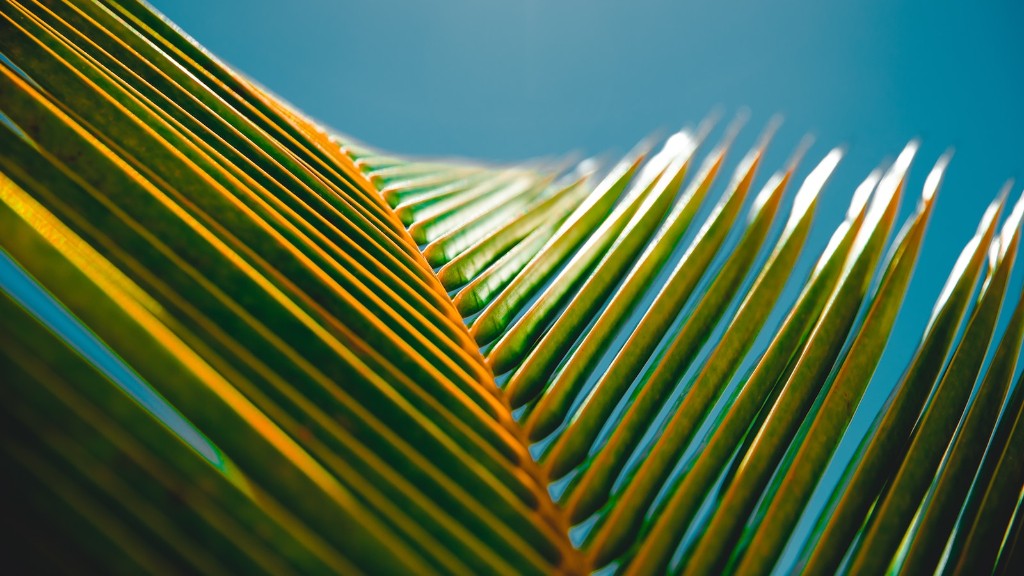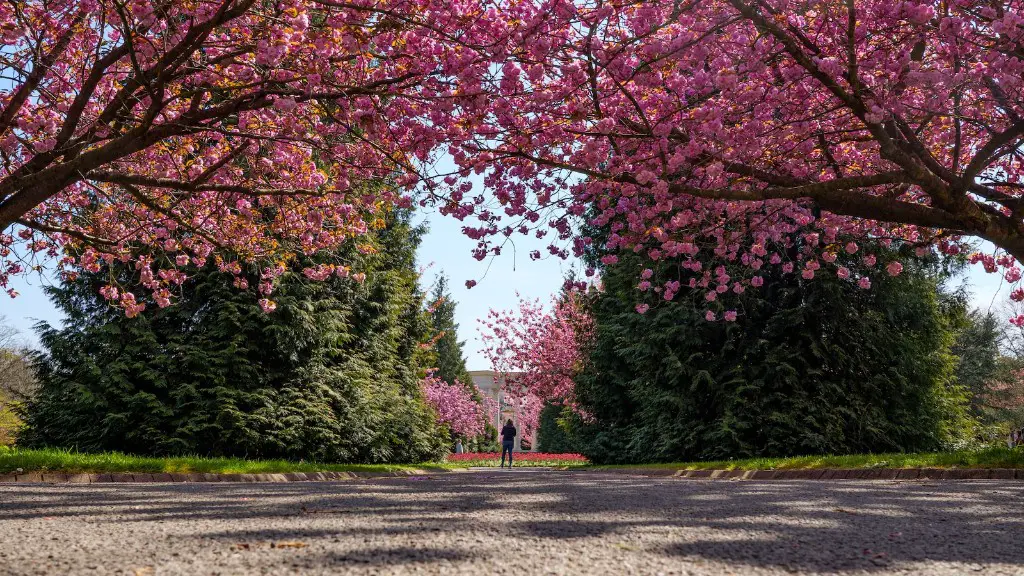Indoor Pruning of a Palm Tree
When pruning a palm tree, it’s important to understand the signs that indicate when it needs to be done. Signs like yellow-colored fronds, bald patches and more can highlight the need to prune. Additionally, indoor and outdoor palm trees require different pruning techniques so it’s important to understand these differences.
Taking into consideration the tips from horticultural expert Katerina Weber, indoor palm trees require diligent pruning. Palms that are placed indoors, bearing in mind thinned out or broken branches require snipping either with scissors or pruning shears. Even if the pruning is done without fail, it’s important to keep in mind that indoor palms still need adequate sunlight.
It’s also important to forego pruning the buds of a palm tree indoors otherwise known as ‘terminal buds’. The terminal buds are located at the tip of the frond’s stem. Their purpose is to grow new leaves and by pruning them a palm tree will not be able to produce healthy leaves. We should keep in mind that when pruning an indoor palm tree, the goal is to keep its size in control, as palms tend to become too large for their space much quicker than other houseplants.
Outdoor Pruning of a Palm Tree
When it comes to outdoor palm tree pruning, the main goal is to remove inessential, yellow-colored fronds or dead leaves. It mitigates an unappealing look to the tree, however by pruning too often, it can potentially ruin the appearance of the tree.
In cases where there are multiple yellow fronds and dead leaves, amateur pruners should use pruning shears and scissors to remove the affected fronds. Those affected should be removed delicately lest it should cause damage to the tree. Additionally, outdoor palms generate more shade when the indoor and outdoor temperatures are higher, hence it is necessary to prune and trim the taller fronds.
However, expert pruners suggest that if a tree has healthy, green fronds, it should not be pruned. This is because when a tree becomes top-heavy or suffers from too many of its fronds being pruned, the tree won’t be able to generate enough food for itself. Due to this, the tree may become stunted and will require help from a professional horticulturalist.
Types of Pruning for a Palm Tree
For either indoor or outdoor palms, there are a few different types of pruning. Heavy pruning requires the removal of entire fronds, usually done when the entire frond has turned yellow and has reached the end of its lifespan. Moderate pruning results in the removal of only parts of the frond to give it a neat look, while light pruning includes only the removal of dead leaves.
Ultimately, the kind of pruning done to a palm tree depends on the state and health of the palm tree. Typically, pruning should be focused more on maintaining the health of the tree rather than improving its aesthetic.
When it comes to pruning, it’s important to remember that the care of the tree should always come before the visual appearance. Going great lengths to prune a palm tree, such as using machines or other machinery can potentially cause more harm than good.
Equipment and Safety for Pruning a Palm Tree
When pruning a palm tree, certain equipment will need to be and gloves are essential for keeping hands safe when pruning. Furthermore, long sleeves will not only protect the arms, but it will also protect the skin from the sharpness of leaves.
Inspecting the pruning tool to ensure that it’s in good condition is also necessary. If the blade is dull or rusty, the pruning job can be immensely difficult. When examining the leaves or fronds of the tree, it is important to be extremely careful as they can be sharp and can sometimes include thorns.
To avoid any further risks, pruning should only be done on a day that is dry and with little to no wind. The reason behind this is because inclement weather often tasks the trees more, making them more fragile and susceptible to diseases.
Additional Fertilization needs for Pruning a Palm Tree
Once pruning is finished, it’s understandable to expect results right away in terms of a palm tree’s appearance. However, additional maintenance such as fertilization is essential for the health and bthese products are typically available in nurseries. Once the palm tree has been fertilized it should be watered to ensure that the fertilization has spread evenly and has been properly absorbed by the soil.
It’s also important to understand that fertilizers aren’t always required, as there could already be enough present in the soil. To test the fertility of the soil, a simple soil test can be conducted by measuring the PH balance. These tests are often available at nurseries free of charge.
Water Requirements for Pruned Palm Trees
When pruning a palm tree, it is important to consider the aftercare, in terms of regular watering. After pruning, the palm tree needs to be watered more than before as this will help tone its body. Furthermore, it will also reduce any external stress that the tree may have gone through, by providing it with the essentials for a healthy recovery.
It is important to arm ourselves with knowledge that is pertinent to our specific situation, such as the type of palm tree we have. Understanding the need for water and light for a plant like a palm tree is extremely important for our long-term success.
Proper Maintenance for Pruned Palm Trees
Proper maintenance is essential when it comes to a pruned palm tree. For indoor palms, it’s important to move them away from areas of the home that contain too much heat or cold which can be deadly. It’s important to remember that while sun is still vital, palms require indirect light, as it is a demand of their maintenance routine.
For outdoor palms, it is important to remember that they require an adequate amount of water and soil drainage. Poor drainage in the soil can cause yellow fronds and damage to the roots. The trunk of the tree should also be watered during dryer spells.
Organic Care for Pruned Palm Trees
Organic care is important for the care and treatment of a pruned palm tree, as the use of chemicals can damage it in the long run. If chemical fertilizers are used, it is important to strictly follow the instruction manual for each product, as an overdose can be extremely detrimental for the tree.
Using compost to fertilize the soil is considered to be the most natural and safest option out there, even though the results may take time to show. When preparing the compost, two equal parts of green and brown material should be cut into small parts. Additionally, the compost should be left in the garden for at least two weeks before planting the palm tree.
Adaptation to Environment for Pruned Palm Trees
It is important to remember that a pruned palm tree needs a certain amount of time to adapt to its environment after pruning. When adapting to a new space, it is important to remember that it will lack equilibrium and support which is why trees often move until they find something to grab onto. In cases like these, installing support, like an artificial palm trunk is the best course of action.
Supporting a pruned palm tree can provide it the support and balance it needs to get used to its new surroundings and climate. Utilizing stakes and sticks is also an option for giving the tree additional support and for providing it the stability it requires to thrive.
Pruning Frequency for Palm Trees
The answer to this question usually depends on the type of palm tree, its age, overall health and climate. In general, indoor palms need to be pruned more regularly than outdoors, as indoor conditions are often not ideal for plants. In the case of outdoor palms, they require more regular pruning during the spring season, as the weather is warmer.
In the case of older palm trees, the fronds can be pruned without fail when they start to turn yellow in color. It’s important to remember that when pruning a palm tree, no more than 25% of the fronds should be removed, as removing too many can be detrimental to the tree’s health.
Conclusion
When it comes to pruning a palm tree, knowledge is key for long-term success. Keeping in mind the different techniques for both indoor and outdoor palms, it is important to prioritize the general health of the palm tree above all else.
Additionally, understanding when and how to prune a palm tree is essential for keeping it looking its best. Being aware of the facts and staying on top of pruning is integral for a long, healthy life for any palm tree.


